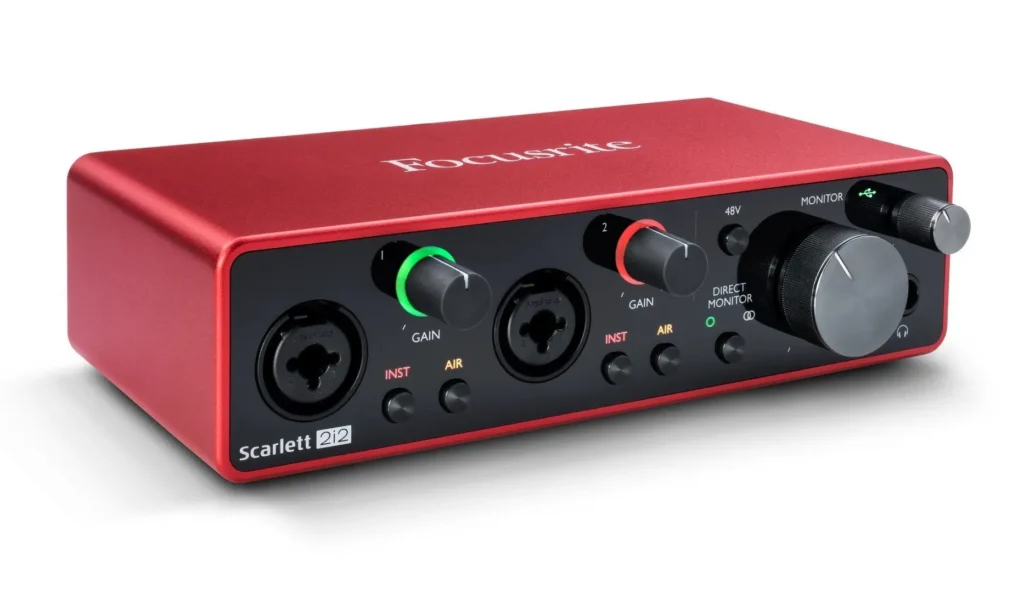What Are Audio Interface Speakers?

Audio interface speakers, often known as studio monitors, are essential components in any audio production setup. Unlike regular speakers, which are designed for casual listening, audio interface speakers are engineered to deliver an accurate and clear sound. This accuracy helps musicians, producers, and engineers hear every detail of their recordings.
Why Are Audio Interface Speakers Important?
The primary role of audio interface speakers is to provide a true representation of the audio being played. This precision is crucial for mixing and mastering music, as it ensures that what you hear is what your audience will hear. If your speakers are not accurate, you might end up with a mix that sounds great on your setup but poorly on other systems.
Who Uses Audio Interface Speakers?
Audio interface speakers are used by a range of professionals and enthusiasts. These include:
- Musicians: To listen to their recordings and practice with precise sound.
- Audio Engineers: To mix and master tracks with accuracy.
- Producers: To ensure that the final product meets high-quality standards.
- Podcast Creators: To edit and refine audio content.
What Makes a Good Audio Interface Speaker?
Several factors contribute to the quality of audio interface speakers. Here’s what to look for:
1. Frequency Response
Frequency response refers to the range of frequencies that the speaker can reproduce. A good audio interface speaker should have a flat frequency response, meaning it can produce a wide range of sounds without altering the balance. This helps in hearing all aspects of the audio, from the deepest bass to the highest treble.
2. Accuracy
Accuracy is critical for audio interface speakers. They should reproduce sound as closely as possible to the original recording. This means minimal coloration or distortion in the audio. Accurate speakers help in making precise adjustments during mixing and mastering.
3. Size and Placement
The size of the speakers can affect the sound quality and your ability to place them effectively in your studio. Larger speakers may produce deeper bass, but they also require more space. Consider the size of your workspace and how you can position the speakers for optimal sound.
4. Build Quality
Durability and build quality are important factors. High-quality materials and construction ensure that the speakers will last longer and perform better. Look for well-built cabinets and solid components.Also read How to master the art of kaatja
5. Connectivity
Audio interface speakers should be compatible with your existing setup. They usually connect via balanced XLR or TRS cables. Ensure that the speakers have the right inputs for your audio interface or mixing console.
How Do You Set Up Audio Interface Speakers?
Setting up audio interface speakers involves several steps:
1. Positioning
Place the speakers at ear level and form an equilateral triangle with your listening position. This setup helps in achieving the best stereo imaging and accurate sound.
2. Calibration
Many studio monitors have built-in controls for adjusting the volume, high-frequency response, and low-frequency response. Calibrate these settings to match your room’s acoustics and your personal preferences.
3. Room Treatment
The acoustics of your room can significantly impact the performance of your speakers. Consider using acoustic panels, bass traps, and diffusers to improve sound quality and reduce unwanted reflections.
What Are Some Top Brands for Audio Interface Speakers?
Several brands are well-regarded in the audio industry for their high-quality studio monitors. Some of the top names include:
- KRK: Known for their Rokit series, KRK monitors are popular for their clear sound and affordability.
- Yamaha: The HS series from Yamaha offers excellent accuracy and build quality.
- Genelec: Genelec monitors are celebrated for their exceptional sound quality and durability.
- JBL: JBL’s LSR series is known for its accurate sound and versatile performance.
Does Price Matter for Audio Interface Speakers?
Price can be an indicator of quality, but it’s not always a guarantee. Higher-priced monitors often come with better accuracy, build quality, and features, but you can still find good-quality speakers at a lower price. Determine your budget and consider what features are most important for your needs.
Why Is It Worth Investing in High-Quality Audio Interface Speakers?
Investing in high-quality audio interface speakers is worth it because they provide a more accurate representation of your audio. This leads to better mixing and mastering, ensuring that your music or audio content sounds great on all playback systems. Quality speakers also offer a more enjoyable and productive working experience in your studio.
In summary, audio interface speakers play a crucial role in the world of audio production. By focusing on factors like frequency response, accuracy, and build quality, you can choose the right speakers for your needs and achieve the best possible results in your audio projects.








